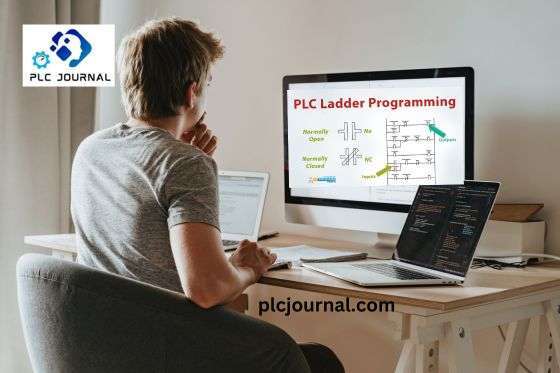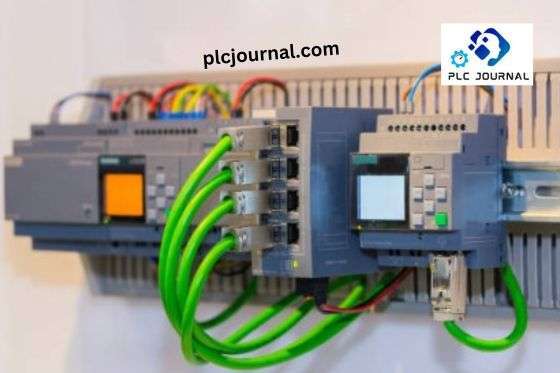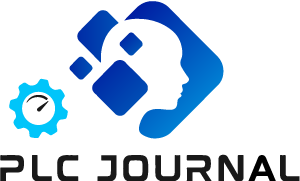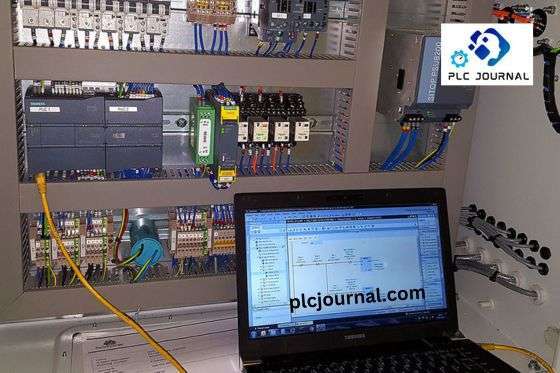In the competitive world of industrial automation, mastering PLC (Programmable Logic Controller) programming is an essential skill. PLCs have become the backbone of modern manufacturing processes, controlling everything from production lines to complex machinery. If you’re looking to enhance your career prospects or simply satisfy your curiosity, you’ve come to the right place. In this comprehensive guide, we will explore the best strategies and resources to help you learn PLC programming and excel in this dynamic field.
1. Understanding the Basics of PLC Programming

To embark on your journey toward PLC programming mastery, it’s crucial to grasp the fundamentals. PLCs are specialized digital computers designed to automate industrial processes. They use a robust programming language – ladder logic – to control the behavior of connected devices and machinery. Familiarizing yourself with ladder logic syntax, instructions, and concepts like inputs, outputs, and timers is the first step towards building a solid foundation.
2. Getting Hands-On Experience

Theory alone is not enough when it comes to mastering PLC programming. To truly excel, you need to gain practical experience by working with actual PLC hardware and software. Many manufacturers provide entry-level PLC training kits that include a PLC, input/output modules, and software. These kits often come with simulation capabilities, allowing you to practice programming without physical hardware. Additionally, various online platforms offer virtual PLC environments where you can develop your programming skills.
3. Taking Advantage of PLC Programming Courses and Certifications

While self-learning is valuable, structured courses and certifications can significantly accelerate your learning curve. Numerous reputable organizations and institutions offer PLC programming courses tailored to different skill levels. These courses typically cover topics such as ladder logic programming, troubleshooting, advanced PLC functions, and integration with other systems. By completing a recognized certification program, you can enhance your credibility and demonstrate your expertise to potential employers.
4. Exploring Online Resources and Communities

The internet is a treasure trove of knowledge when it comes to learning PLC programming. There are numerous online forums, blogs, and tutorials dedicated to supporting aspiring programmers. Joining these communities allows you to connect with experienced professionals, ask questions, and gain valuable insights. Additionally, there are online platforms that offer interactive PLC programming tutorials, allowing you to learn at your own pace and test your skills in real-world scenarios.
5. Delving into Advanced Topics and Specializations
Once you have mastered the fundamentals, it’s time to explore advanced PLC programming concepts and specialized areas. This could include topics such as motion control, PID (Proportional-Integral-Derivative) control, networking, HMI (Human-Machine Interface) development, and data acquisition. By diving deeper into these advanced areas, you can position yourself as an expert in a specific domain and open the doors to more challenging and rewarding opportunities.
6. Staying Up-to-Date with Industry Trends
The field of industrial automation and PLC programming is constantly evolving. To stay ahead of the curve, it’s essential to stay up-to-date with the latest trends and technologies. Attend industry conferences, webinars, and workshops to broaden your knowledge and network with industry professionals. Follow reputable PLC programming websites and subscribe to newsletters to receive regular updates on new techniques, best practices, and emerging technologies.
7. Building a Portfolio and Showcasing Your Skills
In a competitive job market, having a well-rounded portfolio showcasing your PLC programming skills can significantly boost your chances of landing a desirable position. Include examples of projects you have worked on, highlighting your problem-solving abilities, attention to detail, and knowledge of industry standards. If possible, consider developing your own projects to demonstrate your creativity and innovation in applying PLC programming techniques.
8. Collaborating and Networking
The industrial automation field relies heavily on collaboration and networking. Engage with other professionals by attending local industry events or joining online communities. Collaborate on open-source projects or contribute to PLC programming forums. By actively participating in these activities, you can expand your professional network, learn from others, and increase your visibility within the industry.
9. Embracing Continuous Learning
Learning PLC programming is not a one-time effort; it’s an ongoing journey. Embrace continuous learning by consistently seeking new challenges and opportunities to expand your knowledge. Keep up with the latest developments in the field and adapt to changing industry demands. Employers highly value individuals who show a passion for continuous improvement, allowing you to stand out from the competition.
10. Practice Wiring and Connections
Hands-on experience is crucial when it comes to PLC programming. Learn how to wire and connect various sensors, actuators, and other devices to your PLC. Understand the difference between digital and analog signals and how to interface them with your PLC system.
11. Simulation Software
To practice and experiment with PLC programming without the need for physical hardware, use PLC simulation software. Many PLC manufacturers provide free or trial versions of their software, allowing you to create and test programs virtually. This is a valuable resource for honing your programming skills.
12. Write Basic PLC Programs
Start with simple projects, such as turning on a motor when a button is pressed or controlling the level of a tank using a sensor. Gradually increase the complexity of your projects as you become more confident in your programming abilities. Document your programs and their functionality for reference.
13. Troubleshooting
Learning how to troubleshoot and debug PLC programs is a critical skill. Be prepared for unexpected issues and learn how to diagnose and rectify them. Familiarize yourself with error messages and the diagnostic tools provided by your PLC software.
14. Advanced Topics
Once you have a strong grasp of the basics, you can explore advanced topics such as PID control, motion control, and data communication. These advanced concepts are essential for more complex automation tasks.
15.Stay Updated
PLC technology is continually evolving, so it’s essential to stay updated with the latest advancements and trends in the field. Follow industry publications, join online forums, and consider attending conferences or webinars related to automation and PLC programming.
Can you learn PLC on your own?
Yes, it is possible to learn PLC (Programmable Logic Controller) programming on your own. There are plenty of online resources, textbooks, video tutorials, and simulation software available that can help you get started with PLC programming. However, it’s essential to have access to the necessary hardware or simulation tools to gain practical experience. Joining online forums or communities related to PLC programming can also be beneficial, as you can ask questions and seek guidance from experienced individuals.
Is it hard to learn PLC programming?
The difficulty of learning PLC programming can vary from person to person. Some find it relatively easy to grasp, while others may find it more challenging. The complexity depends on your background, your aptitude for programming and automation, and the specific applications you’re working on. If you have a technical background and a good understanding of electrical and control systems, you may find it easier. Like any programming skill, practice, dedication, and a logical mindset are essential for success in PLC programming.
FAQ: How to Learn PLC Programming?
How do I become a PLC programmer?
To become a PLC programmer, you can follow these steps:
Educational Foundation: Start by obtaining a strong foundation in electrical engineering, control systems, or a related field. A formal education in these areas can be beneficial.
Learn PLC Basics: Begin by studying the basics of PLCs, including their components, functions, and programming languages such as ladder logic and structured text.
Hands-on Practice: Gain practical experience by working with real PLC hardware or using simulation software. Practice designing, programming, and troubleshooting PLC systems.
Study Resources: Utilize books, online courses, and tutorials to enhance your PLC programming skills. Consider enrolling in formal PLC programming courses.
Join Communities: Participate in online forums and communities where you can learn from experienced PLC programmers, ask questions, and share your knowledge.
Certifications: Consider obtaining relevant certifications in PLC programming, such as those offered by automation organizations, to validate your skills.
Work Experience: Seek internship opportunities, co-op programs, or entry-level positions in industries that use PLCs, such as manufacturing or industrial automation.
Keep Learning: Stay up-to-date with the latest advancements in PLC technology and industrial automation by attending workshops, seminars, and continuing education courses.
How long does it take to learn PLC programming?
The time required to learn PLC programming can vary based on your prior knowledge, the complexity of the applications you’re working on, and your dedication to learning. Some people can acquire basic PLC programming skills in a few weeks, while becoming proficient may take several months to a year or more of consistent effort and practice. It’s an ongoing learning process, as technology in this field continues to evolve.
Which PLC is easy to learn?
There isn’t a single “easiest” PLC to learn, as ease of learning can depend on your familiarity with the hardware and software, as well as the specific application requirements. However, some PLC brands are known for their user-friendly interfaces and extensive support resources. Popular choices for beginners include Siemens, Allen-Bradley (Rockwell Automation), and Omron. These brands often offer comprehensive documentation, online communities, and training programs that can make it easier to get started with PLC programming. Ultimately, the best choice depends on your specific project needs and the industry you’re working in.
Conclusion
Learning PLC programming is an excellent investment for anyone seeking a successful career in the industrial automation industry. By understanding the basics, gaining hands-on experience, taking advantage of courses and certifications, exploring online resources, delving into advanced topics and specializations, staying up-to-date with industry trends, building a portfolio, collaborating and networking, and embracing continuous learning, you can position yourself as a proficient PLC programmer and overcome any challenges that come your way.
Technical Guides
What Is a Programmable Logic Controller (PLC)? Full Explanation
What is HMI? Human-Machine Interface (HMI)-Full Explanation
What is a Variable Frequency Drive?-It’s complete guidelines
What Is a Servo drive and How Does it Work? It’s complete guidelines
Manual PDF
[PDF] Delta PLC DVP-ES2/EX2/SS2/SA2/SX2/SE&TP Operation Manual Free Download
Delta HMI-DOPSoft User Manual Free Download [PDF]
Cable Making
[DIY-Cable] PLC/HMI-Panasonic Connecting PC
[DIY-Cable] PLC/HMI-Keyence Connecting PC
[DIY-Cable] S7-200 Siemens Connecting PC
[DIY-Cable] Mitsubishi PLC Programming Cable SC-09 for FX-Series
[DIY-Cable] PLC Delta Programming Cable DVPACAB230
[DIY-Cable] PLC OMRON Programing Cable for CJ/CS/CQ-Series
[DIY-Cable] PLC “LS/LG” Programing Cable
[DIY-Cable] PLC “Fatek/Facon” Programing Cable
[DIY-Cable] PLC “Vigor” Programing Cable
[DIY-Cable] HMI “Fuji/Hakko” Programing Cable
[DIY-Cable] “HMI Omron NT-Series” Programing Cable
[DIY-Cable] HMI Keyence “VT3-W4 Series” Cable Connecting To PLC
[PDF] HMI-Weintek Connection PLC Guide



